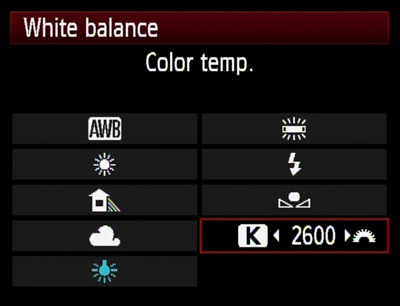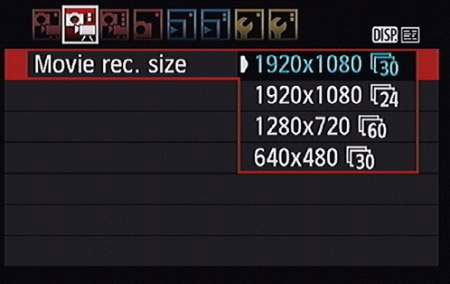Reminders and Upcoming Dates
Here are a couple of student videos for inspiration:
This last one was made for the advanced multimedia reporting class I typically teach once a year. If any of you are interested in pursuing video further, I recommend looking into this class.
The classic sequence that every budding videographer learns when starting out is the five-shot sequence.
- Close-up on the hands.
- Close-up on the face.
- Medium shot.
- Over the shoulder shot.
- One additional creative angle.
https://youtube.com/watch?v=h1QeTIWqQwA%3Ffeature%3Doembed
https://youtube.com/watch?v=SUjnEc6Ak6o%3Ffeature%3Doembed
You won’t always edit things in this exact way when you do a sequence in the real world; sometimes it’ll only be three shots, or it might be ten, and they might be in a different order. But the five-shot sequence is a useful framework for thinking about depicting an activity clearly and engagingly with video. We’ll be shooting a five-shot sequence when we’re in Corona next week.
DSLR Camera Settings
…and how we apply these settings to video
White Balance
You can always use auto white balance on the fly or if you’re uncertain as to the light temperature. The problem with AWB though is that it can change when light changes, even a little bit. So if you’re shooting a person talking and they lean forward, the colors in your shot could potentially take on a different tint.
- White balance will only appear in the menu as an option if you’re not shooting in Auto.
- There are little pictures in the camera to help you with white balance.

- The picture of the light bulb is TUNGSTEN LIGHT. Tungsten light is most indoor light (except for FLUORESCENT LIGHT, which has its own setting)—lamps, non-fluorescent overhead light, most stage lights, etc. Tungsten light is ORANGE. So when you tell your camera you are shooting in this orange Tungsten light, it corrects for it by adding what is at the opposite end of the color wheel (blue).
- The picture of the sun is for outdoor light, or KELVIN LIGHT. Kelvin light is BLUE, so the camera corrects for it by adding orange. There are also pictures for different gradations of light (i.e. shade, cloudy).

- You can also MANUALLY set your white balance in numbers based on the KELVIN SCALE. This is very useful for two-camera shoots where you want the light temp of both cameras to match.

EXPOSURE
When you are controlling for exposure, that means you’re telling the camera how much light to let in.
What overexposure looks like.
When using a DSLR, there are THREE WAYS to tell the camera how much light to let in
- Shutter speed
- ISO
- Aperture (F-stop)
SHUTTER SPEED
- For still photos, the shutter speed is important because it tells the camera in what way you want it to freeze motion (do you want a bike whizzing by to be a blur in the photo or do you want it to be completely frozen so you can see every detail?) Since we are shooting moving images, we don’t have to worry about this. For video, as a rule of thumb, you want your shutter speed to be double the number of frames per second you are recording. Since with these cameras, we’ll be shooting in 30 frames per second, WE SET OUR SHUTTER SPEED AT 1/60.

- We shoot with our shutter speed at 1/60 probably 99% of the time. However, to let more light in in a low-light situation, you can get away with setting your shutter speed at 1/30. DON’T SET IT LOWER THAN 30 BECAUSE IT WILL MAKE YOUR IMAGE STUTTER.
- If it’s really bright out or you’re shooting a performance with hot stage lights and you want to let in less light, you can, however, set your shutter speed higher than 60 (in multiples of 30—so you can set it at 90, 120, etc.)
ISO
ISO tells your camera sensor how much light to let in.
- THE HIGHER YOUR ISO NUMBER, THE MORE LIGHT YOU ARE LETTING IN.
- Remember, with DSLRs it is always a give and take, push and pull relationship with letting in light and image quality. So the higher your ISO number, the grainier your image.
- In general, if you are outside you’re using a lower ISO (like 100 – 320) since outdoor light is brighter, and inside you’re using a higher number (like 800 – 1600) since indoor light is weaker.
- Generally if you use an ISO 2000 or higher you start to see grain on these cameras (although that doesn’t mean you should never do it.)
APERTURE (F-STOP)
- F-stop tells your lens how much light to let in
- THE LOWER YOUR F-STOP NUMBER, THE MORE LIGHT YOU ARE LETTING IN
- The other important thing your f-stop controls is your DEPTH OF FIELD
- DEPTH OF FIELD: the distance between the nearest and the farthest objects in a shot that appear in focus.
- The LOWER your f-stop number, the SHALLOWER your depth of field.
- The HIGHER your f-stop, the DEEPER your depth of field (i.e. more is in focus)
- Even though a shallow depth of field looks really cool and cinematic, you have to ask yourself if it is serving the story well. There are absolutely storytelling reasons you would want everything in the shot in focus and other storytelling reasons you would want only a small portion of the shot in focus.
- MAINTAINING FOCUS WHEN SHOOTING WITH A SHALLOW DEPTH OF FIELD IS WHAT TRIPS A LOT OF PEOPLE UP. At f/2.8, for example, your subject’s eyes might be in focus, but the tip of her nose is not. If she moves forward even half an inch, her eyes are no longer in focus. So you have to be on your toes at all times shifting the focus ring to maintain focus on her when she leans in to tell you that juicy secret, or your moment is lost.
The relationship between the ISO and the f-stop is what you’re always negotiating when deciding what to shoot.
The LCD screens on our cameras skew a little dark, so it is easy to OVEREXPOSE (let too much light in so your shot is blown out—similar to blowing out your audio because your mic levels are up to high, or “too hot.)
But if you can master depth of field, you can use pull-focus or rack focus shots to great effect.
https://youtube.com/watch?v=I-N_7QXA6xE%3Ffeature%3Doembed
FOCUS
It is really easy to shoot video that is OUT OF FOCUS with these cameras. If your stuff isn’t in focus, you just wasted a lot of people’s time. So pay attention to focus at all times.
- Use the focus ring on the lens to shift focus (turn ring with your elbow down, not sticking out sideways)
- Zoom in all the way on your subject and focus, then zoom back out to your desired framing; the subject will stay in sharp focus
Video Camera Workshop
Practice setting up your tripod and mounting the camera.
Connect the wired lav microphone to the camera and have your subject clip it to their collar, with the mic facing their mouth. Once again, I’ll remind you of the importance of good audio:
Practice framing an interview with your subject on one of the thirds, looking slightly into frame, not directly at the camera. Position yourself in the correct location as the interviewer to draw their eye line.
Try your hand at a pull-focus or rack focus shot.
Pull up your interview clip on one of the computers and listen back to confirm that your microphone was working.
















